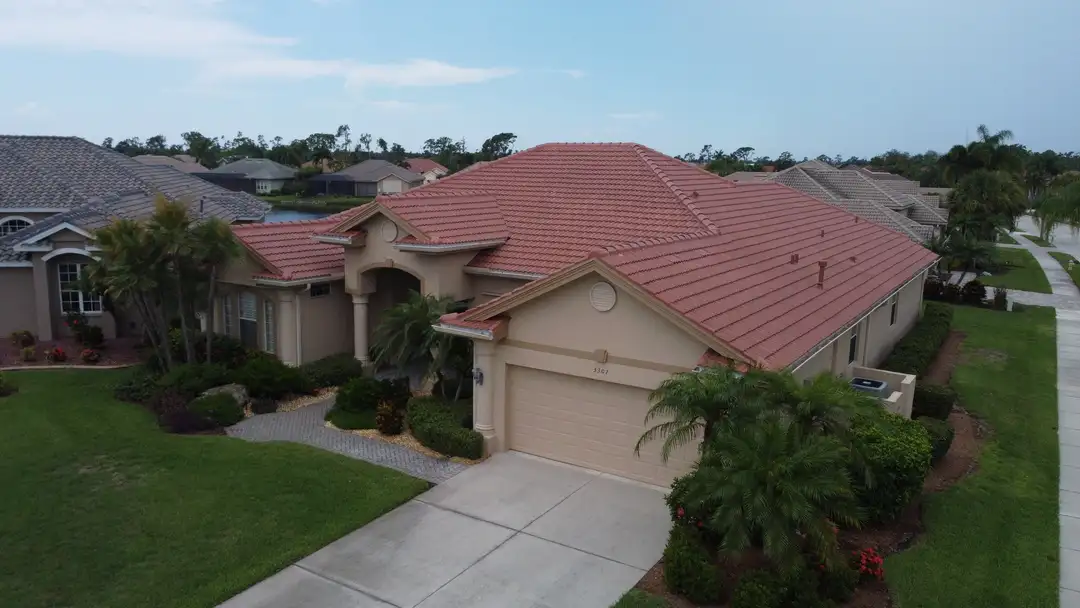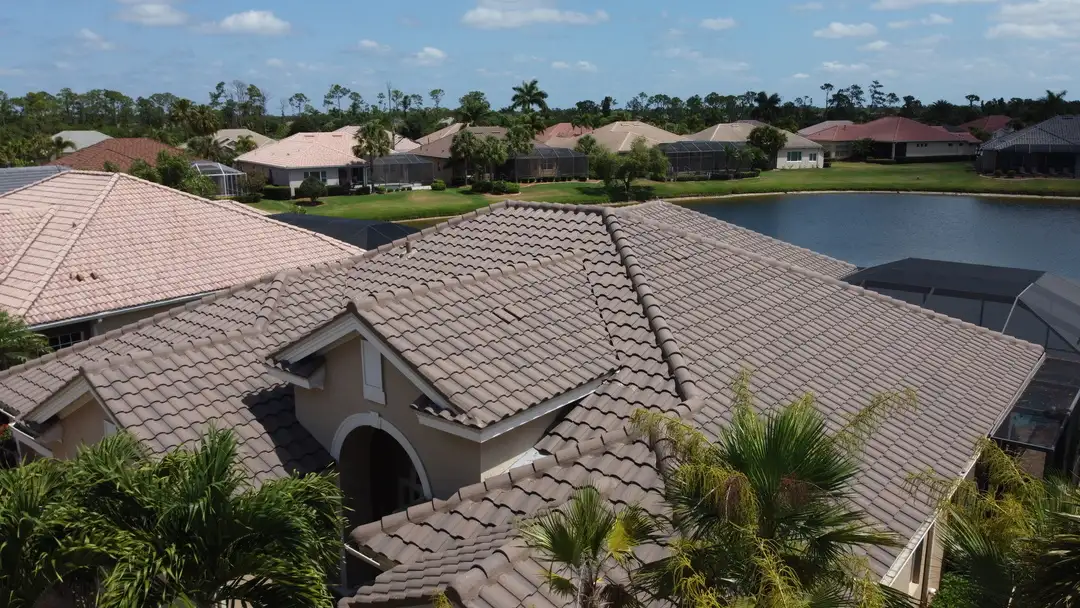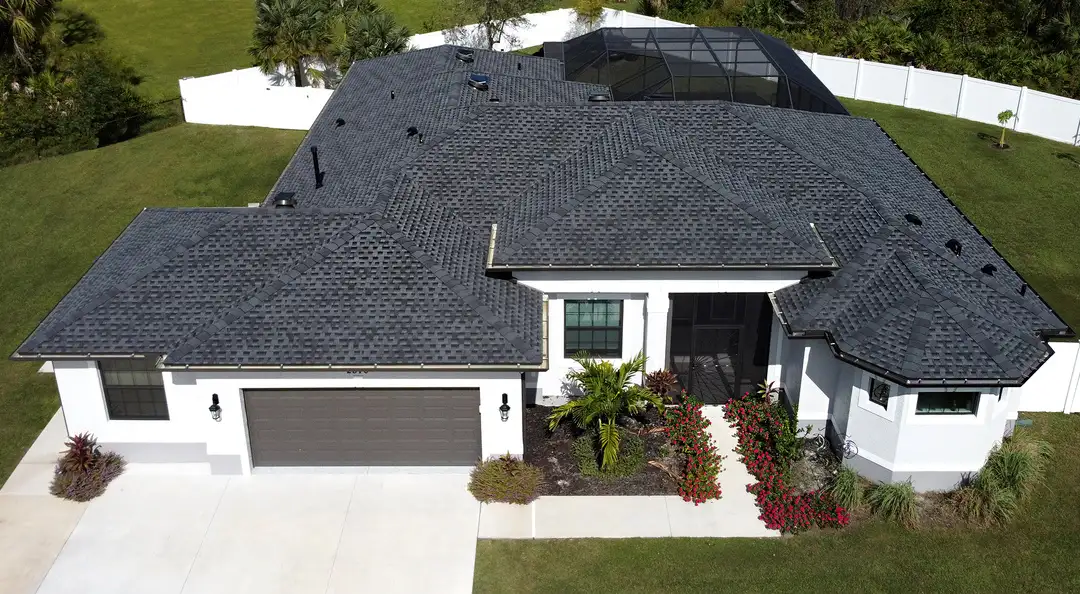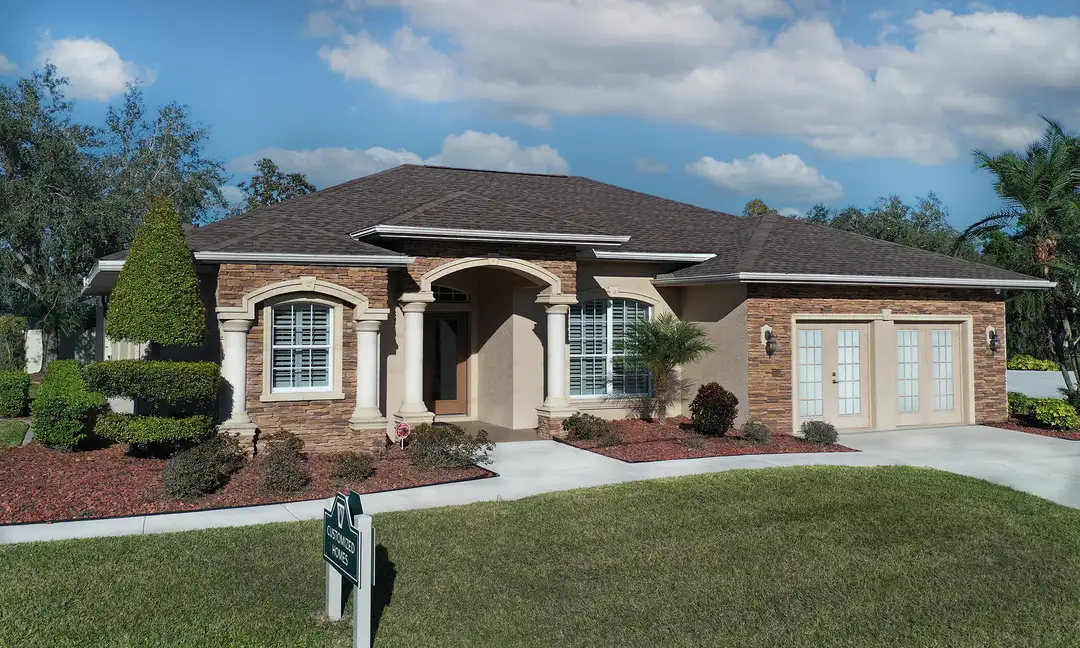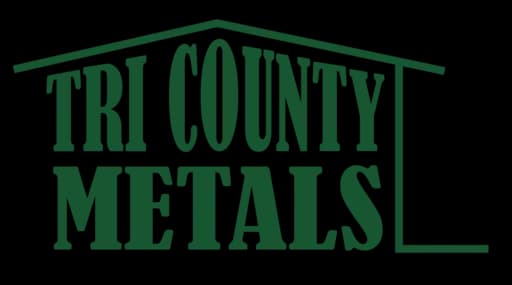N Race Street, North Port, FL
Drone Video
Tap to watch
Photo Gallery
Tap to expand an image
About This Project
Summary
SonShine Roofing completed this shingle roof replacement in North Port, FL for Windemere Homes Inc., a local builder known for quality construction. For their model home, they selected GAF Timberline HDZ® shingles in the warm, inviting Golden Harvest color. This shingle choice adds a rich, dimensional look that complements the home’s exterior while providing the superior durability and wind resistance GAF is known for—perfect for showcasing craftsmanship in a model home.
Explore More Roofing Projects Near North Port
Roof Replacement FAQs
Does attic insulation and ventilation really make a difference?
Yes—more than most homeowners realize. Your roof surface can run nearly 100°F hotter than the air on summer days, and attics can hit the high 100s. Without proper insulation and balanced airflow, that heat and moisture can warp beams, fry shingles from beneath, and invite rot. The fix is straightforward: sufficient attic insulation plus soffit intake + ridge exhaust ventilation to move hot, wet air out.
How do the main roofing materials compare in Sarasota’s climate?
- Asphalt shingles: Affordable, easy to source, and versatile. Pros: fire/water resistance, low maintenance, ~25-year lifespan. Cons: lighter weight can mean blow-offs in big storms; extreme summer heat can warp/crack; expect occasional repair budgeting.
- Clay tile: Classic look, handles heat and salt spray, long-lasting (up to ~50 years). Pros: fire/rot resistance, stays put in wind. Cons: pricey, heavy (may need structural reinforcement), and fragile during handling.
- Concrete tile: Popular in Florida and lighter than many expect. Pros: durable (about 50–100 years), low maintenance, fire/water resistance, strong wind performance, color options (can mimic wood/other looks). Cons: somewhat expensive; design options are more limited than premium materials.
- Metal roofing: Comes in profiles that resemble shingles/tiles/shakes. Pros: little maintenance, fire/water/insect resistance, stands up to salt spray, reflects heat (can lower cooling bills), up to ~40-year lifespan. Cons: higher upfront cost and more limited design choices.
- Slate: Stunning and extremely durable (often 100+ years). Pros: water/rot/fire resistance, high hurricane tolerance. Cons: very heavy (reinforcement likely), fragile to walk on, and the most expensive option here.
What’s my next step if I’m unsure?
Schedule a professional inspection. Our Sarasota-based team weighs age, damage, storm history, and efficiency goals, then gives you a clear recommendation you can trust.
Is replacement always more expensive in the long run?
Upfront, yes. Over time, not necessarily. Repeated fixes on an aging roof can outpace the cost of a new, warrantied system that also boosts curb appeal and home value.
What should I consider before choosing my roof material?
Start with weather + exposure (wind zone, rain frequency, salt air), then weigh budget vs. lifespan, maintenance expectations, and structure (some materials—clay/slate—may require reinforcement). If you want cooler interiors, factor in heat reflectivity (metal) and long-term energy savings. Not sure which way to go? A local inspection and consult will align materials with your home’s design, structure, and neighborhood conditions—so you’re not just buying a roof, you’re buying fewer headaches.
What’s the best roof type for Florida homes?
There isn’t a single winner—it’s about matching material to Sarasota’s heat, humidity, storms, wind, and (for coastal folks) salt spray. Asphalt shingles are budget-friendly and common; concrete and clay tiles bring serious longevity and wind resistance; metal reflects heat and shrugs off salt; slate is gorgeous and ultra-durable but heavy and costly. The “best” choice balances your budget, aesthetics, structural needs, and how exposed your home is to wind and sea air.
Do you offer financing or detailed estimates?
Yes—transparent estimates and financing options help you pick the right path for your budget, without guesswork. See our financing page for more information.
Can a new roof improve energy efficiency?
Yes. Older roofs often lack modern ventilation/reflective materials. If hot-house bills are rising, a strategic repair or ventilation upgrade might help—but if roof issues are broad, an energy-efficient replacement is the better investment.
